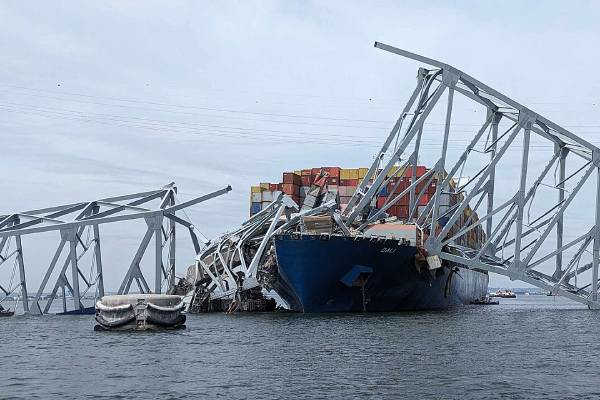The city of Baltimore is still reeling from the tragic collapse of the Francis Scott Key Bridge early Tuesday morning. Serving over 35,000 people daily, the bridge is an integral part of the city's infrastructure, and its absence will be felt for years to come.
The bridge also serves as the sole entryway into the Port of Baltimore, the nation's 17th largest by total tons in 2021, and the leading American port for importing and exporting automobiles, light trucks, and construction vehicles.
President Biden stated yesterday his intention for the federal government to cover the entire reconstruction cost. However, cleanup will take months, and constructing a new bridge could span years.
As of Wednesday morning, there was no timetable as to when cargo ships may be able to again access the Port of Baltimore. There are at least 10 ships currently anchored offshore in a holding pattern.
Supply Chain 247 Editor Andy Gray has a roundup of the latest news here: How Baltimore's Bridge Collapse Will Affect Supply Chains
SC
MR


More TMS
- Services sector sees growth in October, reports ISM
- Managing inbound freight: What has changed in two decades?
- Inbound freight: Often a missed opportunity
- 2024 Warehouse/DC Operations Survey: Technology adoption on the rise
- Looking back at NextGen 2024
- Manufacturing again contracts in October, reports ISM
- More TMS
Latest Podcast

 Explore
Explore
Business Management News
- Strengthening customer fulfillment: Building a strategic stakeholder network
- The hard job of teaching soft skills
- Trump picks former Wisconsin congressman Sean Duffy for DOT secretary
- Made in Mexico, manufactured by China
- Retail sales see gains in October, reports Commerce and NRF
- Balancing green and speed: Home delivery insights from the pandemic era
- More Business Management
Latest Business Management Resources

Subscribe

Supply Chain Management Review delivers the best industry content.

Editors’ Picks




